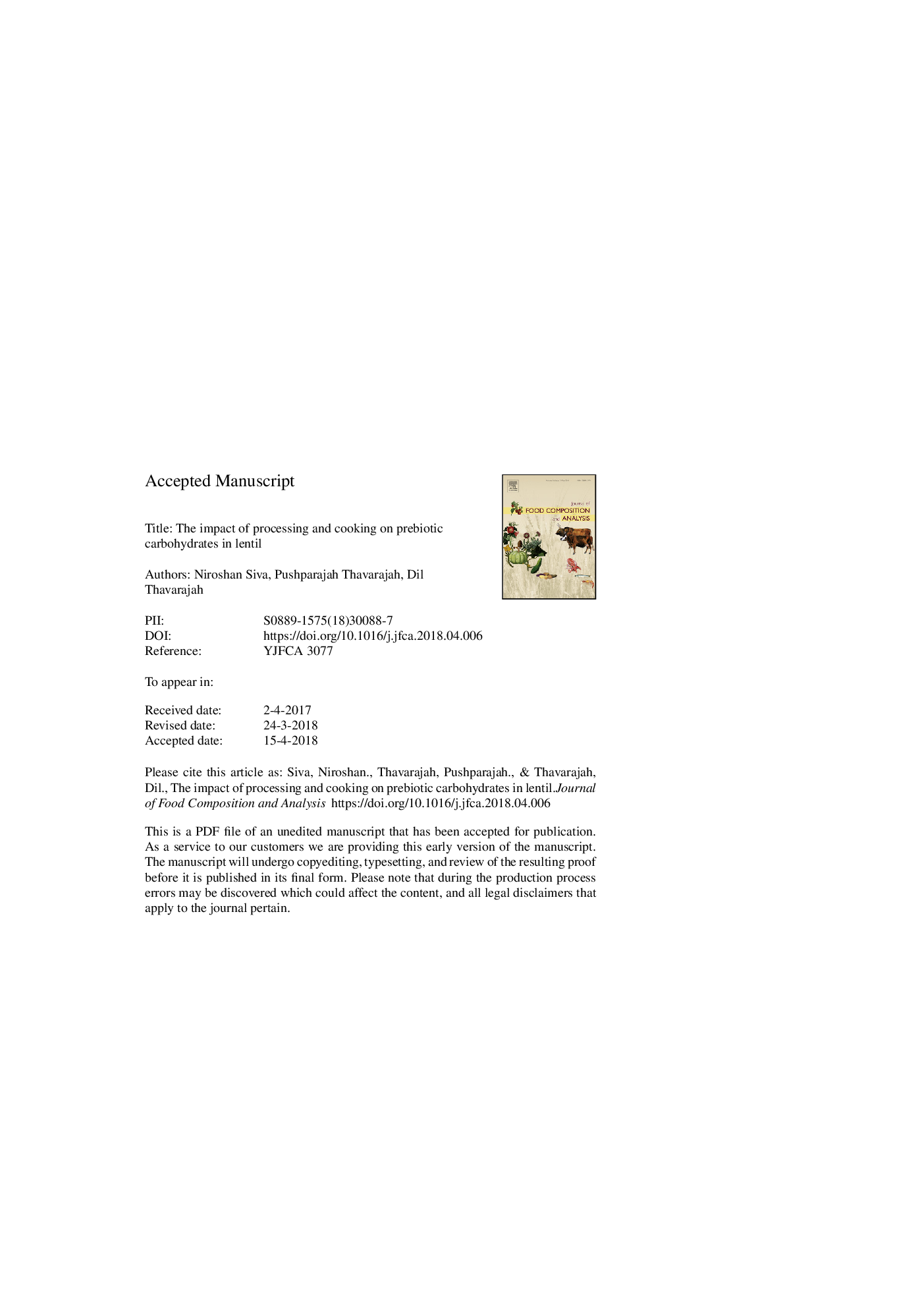| Article ID | Journal | Published Year | Pages | File Type |
|---|---|---|---|---|
| 7619609 | Journal of Food Composition and Analysis | 2018 | 24 Pages |
Abstract
Lentil (Lens culinaris Medikus) is a significant food source of prebiotic carbohydrates, including sugar alcohols (SA), raffinose-family oligosaccharides (RFO), fructooligosaccharides (FOS), and resistant starch (RS). The levels of these carbohydrates and, hence, nutritional value, can change during processing and cooking. This study determined changes in prebiotic carbohydrate types and concentrations in lentil from three market classes (red, green, and Spanish Brown) subjected to different processing methods (whole, dehulled, and splitting) and cooking, cooling, and reheating. Dehulling and splitting of lentil decreased SA in red and green market classes but RFO and FOS only significantly decreased in dehulled split red lentil. Further, dehulling and splitting of red lentil significantly decreased RS concentrations compared to the whole seed. In some cases, SA, RFO, and FOS significantly increased with cooling but decreased after reheating. Cooling and reheating significantly increased lentil RS concentration for all market classes. Spanish Brown “Pardina” had the highest total prebiotic carbohydrates (9492â¯mg/100â¯g) of all market classes tested (range 6935-8338â¯mg/100â¯g). Overall, selection of lentil market class, processing, and cooking method should be considered to optimize nutritional value.
Keywords
Related Topics
Physical Sciences and Engineering
Chemistry
Analytical Chemistry
Authors
Niroshan Siva, Pushparajah Thavarajah, Dil Thavarajah,
